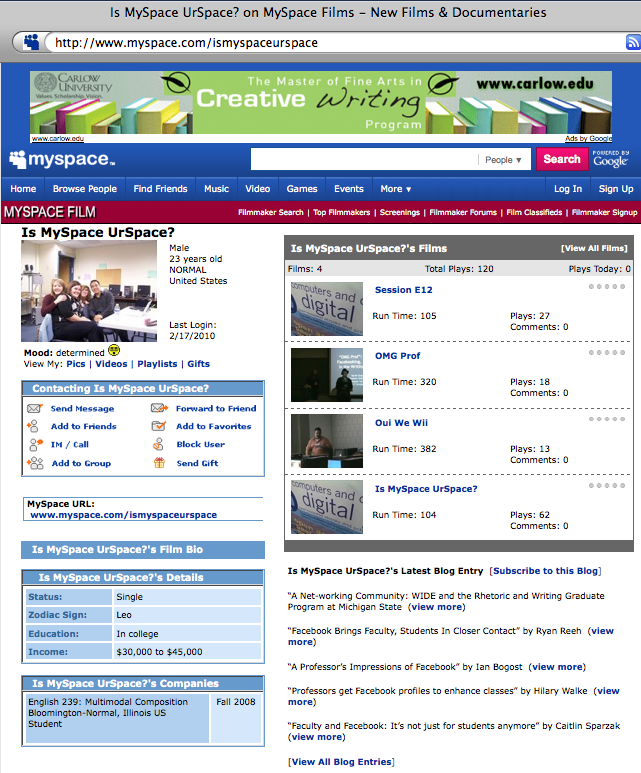This project began as an anecdote about teachers and social networking sites, wherein a student relayed the fact that one of her teachers had called Facebook “the devil.” In a class on Multimodal Composition, we could all laugh at the ridiculousness of that statement, but students knew better (and had experienced different). So the question became: How can teachers integrate social networking inside and outside of the classroom? This interactive MySpace site asks and answers this question. In the tradition of hypertextual scholarship, the site requires readers to interact with it and combine nodes of information in the form of videos from and about the Watson conference, blog posts that offer annotated research, and social-networking updates to recreate the argument.
By Matthew Wendling, Amy Determan, Ariana Haza, Katie Rockwell
As undergraduates, we believe that educators should incorporate social networks like MySpace and Facebook into their pedagogies because they offer a different way of composing not
only outside of the classroom, but inside it as well. Social networking involves composing with attention to digital literacy rather than the ten-page, double-spaced papers educators are used to reading. To support our argument that social networking sites offer more than just social purposes, we cite Angela Haas, who argues in Currents In Electronic Literacy that “the use of non-academic sites such as MySpace helps to break the academic/non-academic binary”
(QA:CITATION). If educators would familiarize themselves with the networks, they would be able to recognize that not only their students, but also their peers, have plunged into a new way of composing
and are in fact taking literacy to a new level. Breaking the academic binary will give insight to educators on why students are using these easy, accessible social networks.
We include four components on our MySpace page, through which we hope to give insight as to why each feature is a form of literacy: photo album, blog, MySpace TV, and audio files. Each of these media are used with consideration of what mode is best to communicate our information in, and overall represents our argument about the use (by both professors and students) of social networking sites as well as behind-the-scenes documentation of our composing processes. By including these different, multimodal features, viewers will hopefully understand that literacy goes beyond pen and paper, and onto digital, multimodal formats.
